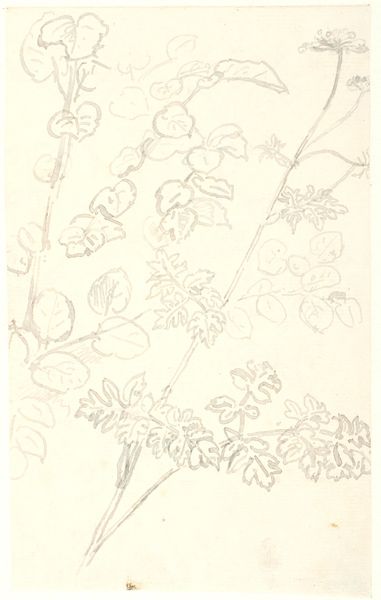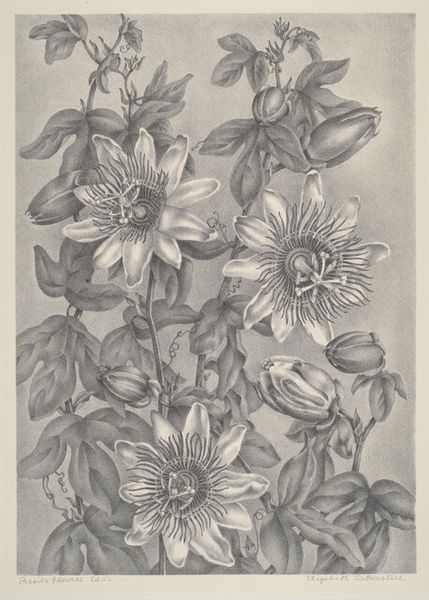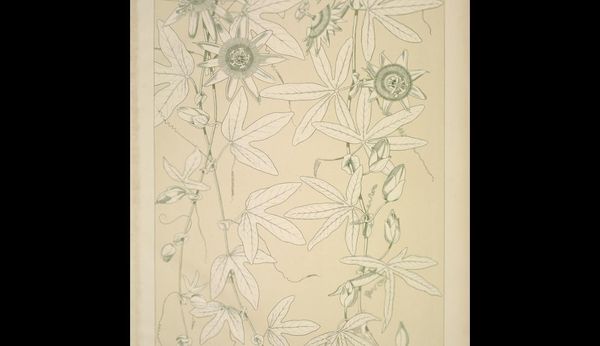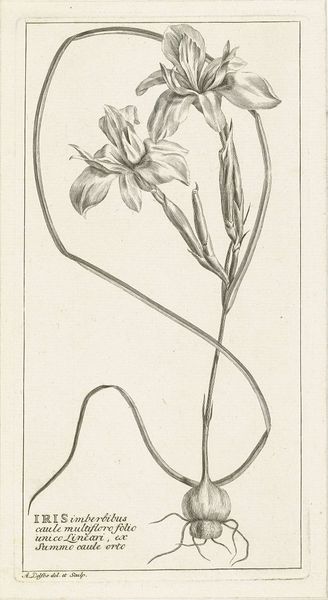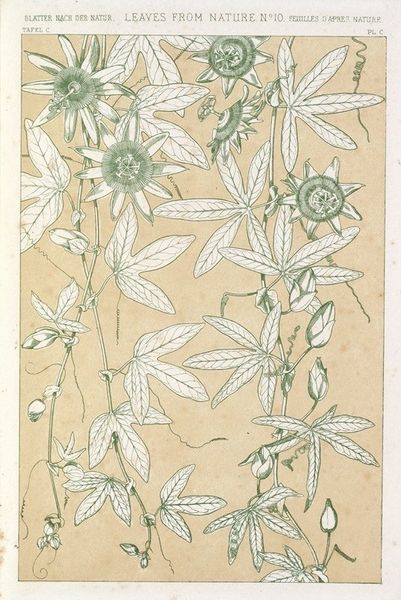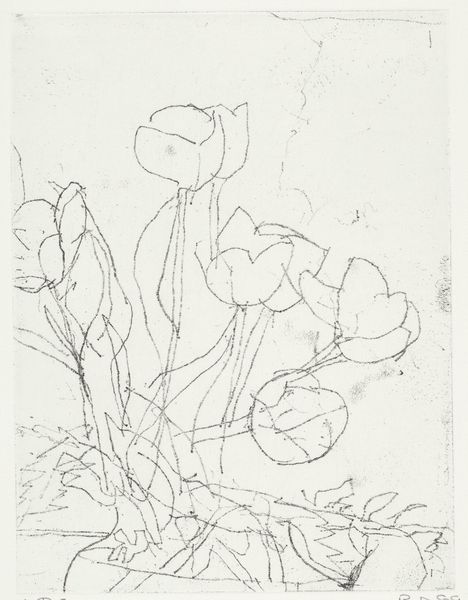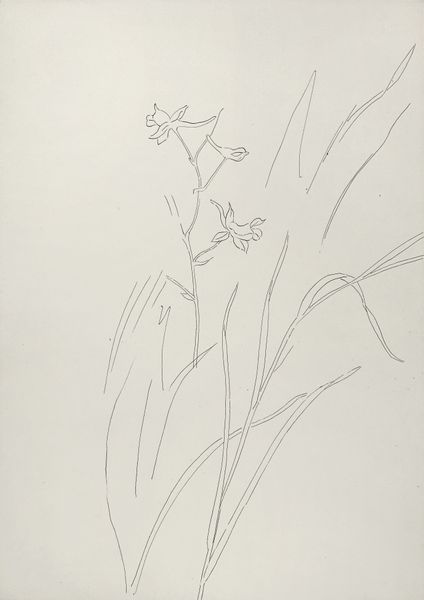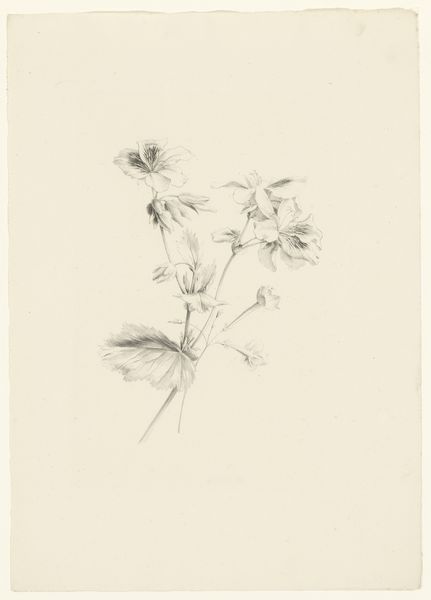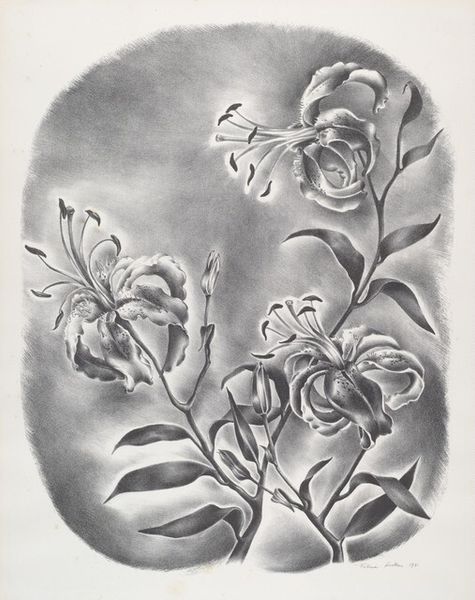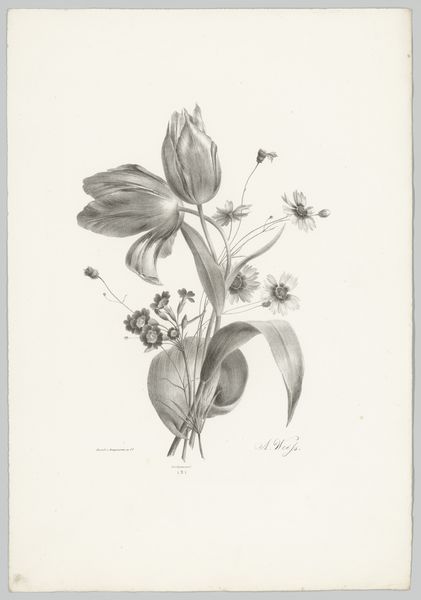
drawing
#
drawing
#
etching
#
linocut print
#
line
Dimensions: sheet: 50.17 × 39.05 cm (19 3/4 × 15 3/8 in.) board: 55.25 × 44.13 cm (21 3/4 × 17 3/8 in.)
Copyright: National Gallery of Art: CC0 1.0
Curator: This is Jack Beal’s "Flowers," from around 1975, a compelling example of his drawings in printmaking mediums like etching and linocut. What's your immediate take on it? Editor: There's an ethereal quality here, wouldn’t you say? The light green background, coupled with those delicate line drawings—it evokes a sense of calm and gentle observation. Almost botanical, but more about line and form than true representation. Curator: Absolutely, the artist has been known to portray intimate scenes of American life. It reminds one of botanical illustrations produced during Victorian era—it almost hints back to those intricate scientific representations but rendered with a touch of modern, expressive simplicity. Do you think Beal was drawing on those historic, botanical illustrations as inspiration for his own drawing? Editor: Possibly, or perhaps responding to them? While Victorian studies sought meticulous detail, this print is more skeletal—it provides just enough information to identify the subject. See how those varied lines thicken and thin to emphasize edges? Beal’s reduced floral arrangement down to almost calligraphic gestures. Curator: Beal's use of linocut and etching for "Flowers" also fits a pattern in American art, doesn't it? During that period many artists used printmaking as a response against market constraints of paintings or sculptures—print became an affordable vehicle for democratizing art ownership among a broader middle class. It echoes ideas about the social accessibility and art democratization that resurfaced throughout the mid-20th century. Editor: Intriguing thought. Looking closely, it is also the use of blank space which does so much work here, providing as much information as the linear form itself. The texture within a field that allows visual and cerebral interpretation. The line becomes more dynamic and allows its relation to its background which creates the art. Curator: Considering Beal’s involvement in figurative painting during the time it seems that his commitment to capturing visible, relatable subjects would make the accessible media like print all the more important. And one also imagines that line work like we see in this print is important preparation for his oil work. It allowed the public more contact to him during his painting process. Editor: That rings true. Thinking about those delicate but assertive lines, that's precisely it: contact, the intimacy with form captured and displayed to engage public thought with botanical imagery and print media. Curator: It allows new perspectives on floral imagery in social discourse and art itself. Editor: Exactly, and its very presentation invites you closer—to see and maybe question those lines more profoundly.
Comments
No comments
Be the first to comment and join the conversation on the ultimate creative platform.
